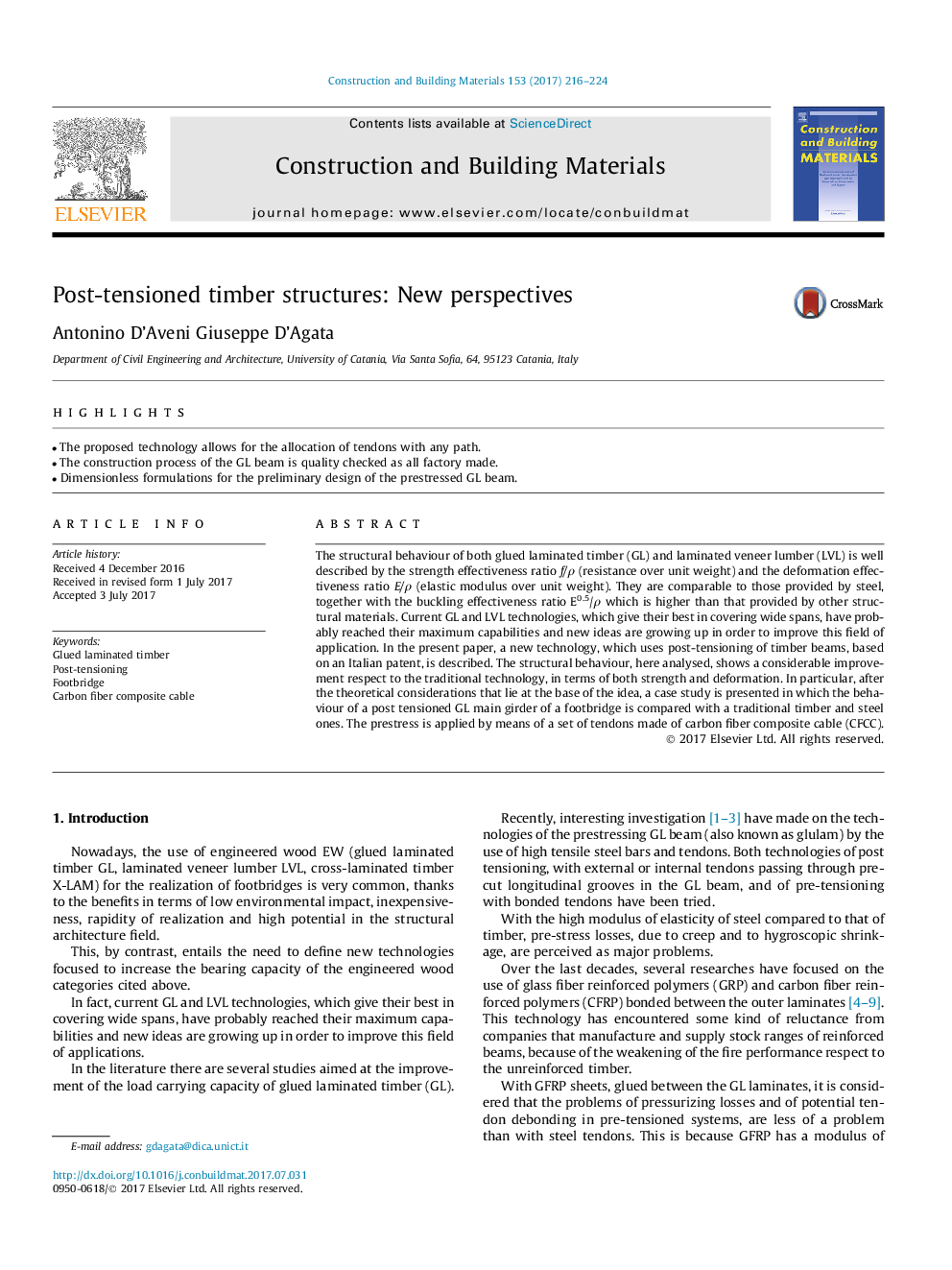| Article ID | Journal | Published Year | Pages | File Type |
|---|---|---|---|---|
| 4912969 | Construction and Building Materials | 2017 | 9 Pages |
Abstract
The structural behaviour of both glued laminated timber (GL) and laminated veneer lumber (LVL) is well described by the strength effectiveness ratio f/Ï (resistance over unit weight) and the deformation effectiveness ratio E/Ï (elastic modulus over unit weight). They are comparable to those provided by steel, together with the buckling effectiveness ratio E0.5/Ï which is higher than that provided by other structural materials. Current GL and LVL technologies, which give their best in covering wide spans, have probably reached their maximum capabilities and new ideas are growing up in order to improve this field of application. In the present paper, a new technology, which uses post-tensioning of timber beams, based on an Italian patent, is described. The structural behaviour, here analysed, shows a considerable improvement respect to the traditional technology, in terms of both strength and deformation. In particular, after the theoretical considerations that lie at the base of the idea, a case study is presented in which the behaviour of a post tensioned GL main girder of a footbridge is compared with a traditional timber and steel ones. The prestress is applied by means of a set of tendons made of carbon fiber composite cable (CFCC).
Related Topics
Physical Sciences and Engineering
Engineering
Civil and Structural Engineering
Authors
Antonino D'Aveni, Giuseppe D'Agata,
